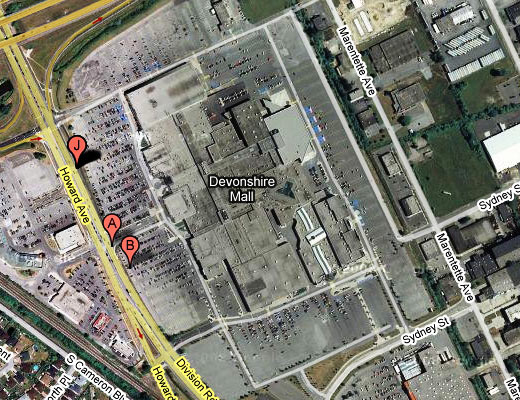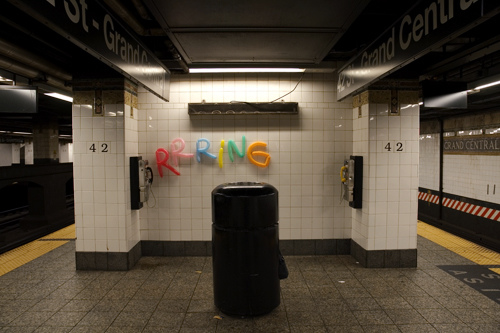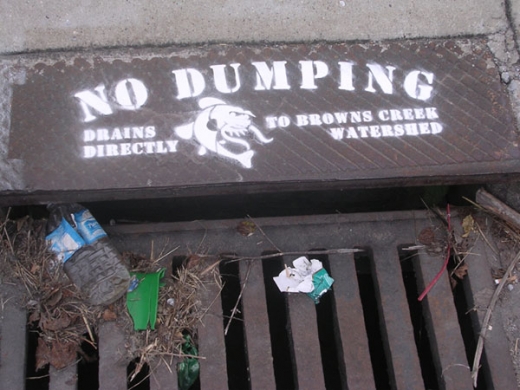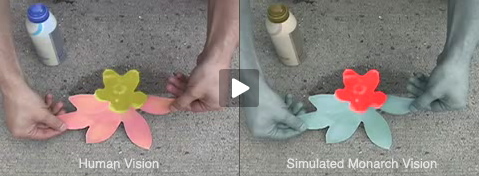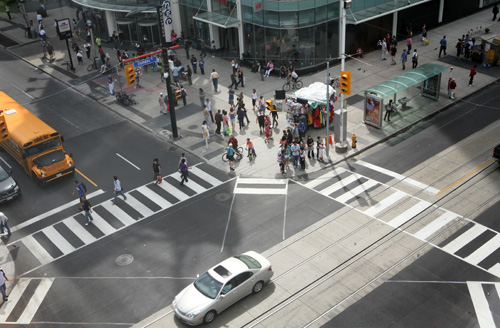
On a pretty regular basis, I have to cross our infamous Huron Church Road intersection at College Avenue in order to get to LeBel. If I’m lucky, I’m coming from the West, and only have to cross College. However, there are many times that I have to cross Huron Church itself, fighting the timer (what is it, about 15 seconds?) and drivers making left-hand turns.
In Toronto, they unveiled a new set of pedestrian crossing signals, setup to create a crossing time of 57 seconds and an opportunity to cross in any direction (including diagonally). This change is happening at Yonge and Dundas and is being billed as one of Toronto’s initiatives to make the city more pedestrian-focused. While there are likely problems with this (traffic rerouting itself, many idling cars), I would welcome a change like this in Windsor.
That our city is clearly built around cars is one huge example of just how broken it is. Public transit here is rough (1/2 hour waits for buses after 6pm?), and I give anyone who bicycles on any major street a lot of credit, but how do we begin to look at a problem like the layout of a city on our terms and at our scale?
Image and details [via].
